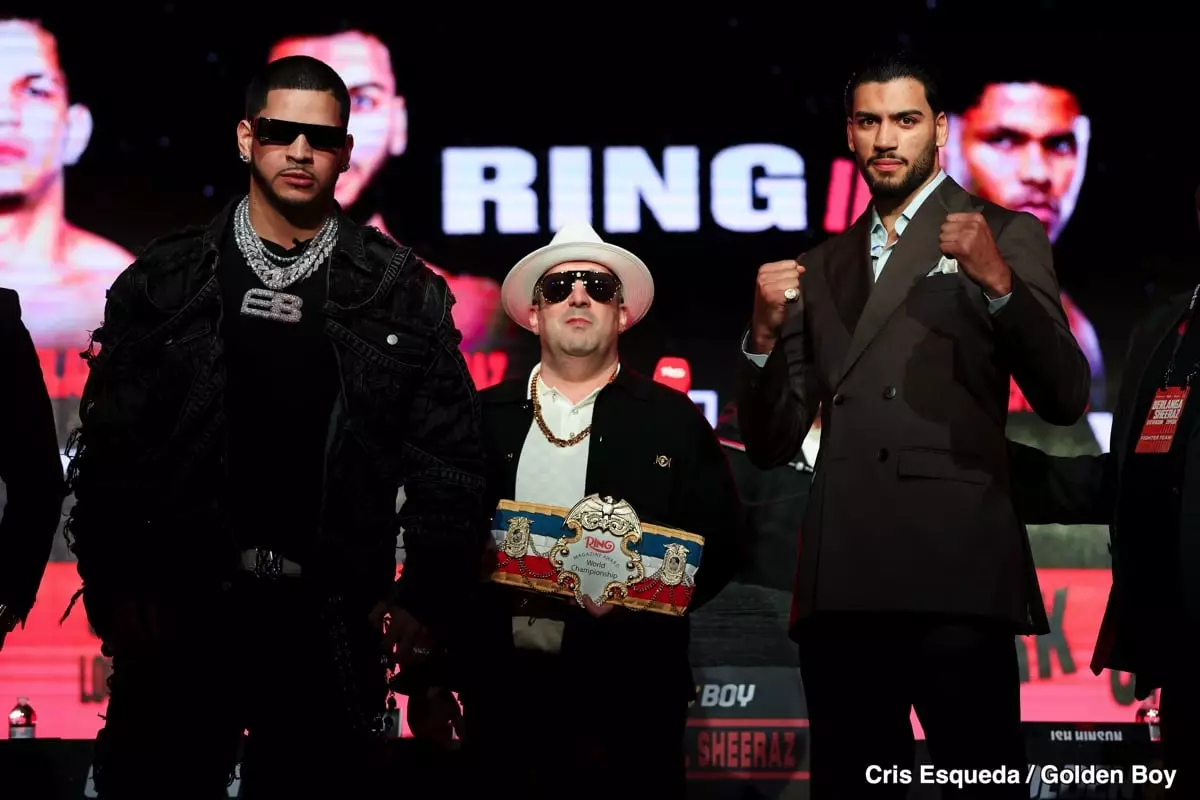In professional boxing, the dimensions of the ring are often overlooked, yet they play a pivotal role in shaping the fight’s outcome. The decision to reduce the ring size from 20 to 18 feet for the upcoming super middleweight eliminator between Edgar Berlanga and Hamzah Sheeraz is a bold move that signals a strategic emphasis on pressure and intensity. It’s not merely about confinement; it’s a calculated step to restrict movement, favor aggression, and potentially trap opponents into uncomfortable fighting zones. Berlanga’s assertion that he intends to “break him up” by exploiting the smaller ring reveals a fighter embracing calculated chaos, aiming to cut off Sheeraz’s reach and break his rhythm early.
This adjustment underscores a deeper understanding of boxing tactics—how environment and ring dimensions can be weaponized. For Berlanga, the small ring embodies a battlefield where his power can dominate, forcing Sheeraz into exchanges where his durability and defensive skills will be tested. Conversely, it challenges Sheeraz’s trainer, Andy Lee, to devise a game plan that avoids the trap, emphasizing how strategic ring dimensions can influence coaching decisions and fight dynamics.
The Psychological Edge of Early Engagement
Berlanga’s plan to attain an early stoppage hinges on his aggression and intention to inflict psychological damage from the outset. His confident declaration about “breaking him up” suggests an aggressive mindset—not just a desire to win, but to dominate visually and psychologically. Pressuring Sheeraz early could serve to unnerve him, sapping his confidence and reducing his effectiveness. It indicates Berlanga’s belief that overwhelming his opponent quickly is the surest route to victory, especially against a fighter like Sheeraz, who may be susceptible to psychological stress if pushed into a corner.
This approach also raises questions about the importance of mental resilience in a high-stakes bout. If Berlanga can establish dominance within the first few rounds, the fight becomes less about technical boxing and more about survival for Sheeraz. However, this strategy can backfire if Berlanga pushes too hard and exhausts himself or if Sheeraz’s team successfully implements their game plan to absorb early pressure and retaliate once Berlanga’s energy wanes.
The Fight’s Implications for Careers and Legacy
This upcoming match is more than just an eliminator; it’s a gateway to future superstardom. A victory for Sheeraz could catapult him into the elite by securing a shot at Canelo Alvarez—one of boxing’s biggest names. Conversely, a Berlanga win, especially if achieved convincingly or via knockout, could derail Sheeraz’s momentum and potentially shift power within the division.
The stakes are further elevated by the narrative surrounding who Turki Alalshikh expects to fight next. The strategic choices—both in fighting targets and in ring size—are driven by the desire to stake a claim on bigger fights and lucrative paydays. The pressure isn’t only physical but also political, as promoters and organizers shape the landscape to favor fighters with marketability and championship potential.
Ultimately, this fight encapsulates the many layers of boxing—where strategy, mental toughness, preparation, and timing collide. Both fighters are aware that their performances will reverberate well beyond the ring, influencing their trajectory, earning power, and legacy within a highly competitive division.
Personal Opinions and Forward-Looking Insights
From my perspective, Berlanga’s aggression and intent to use the small ring as an offensive weapon are commendable but risky. Excessive pressure may lead to quick fatigue or costly mistakes, especially if Sheeraz manages to survive initial bombarding. On the other hand, Sheeraz’s resilience and tactical patience could turn the tide, especially if he counters Berlanga’s early bursts with disciplined boxing and sharp counters.
The fight also epitomizes the ever-present tension between power and skill, aggression and patience. In a division ripe with talent, the winner might not just claim bragging rights but also chart a path to historic megafights—potentially against Canelo or other top contenders. But make no mistake: the outcome will hinge on who adapts better to the unique environment the ring size and fight dynamics create.
As fans, we are witnessing a crucial clash where strategic ingenuity and raw power converge. It’s not just about skill; it’s about mental fortitude, the ability to adapt, and the willingness to seize the moment. The winner of this bout will not only earn a coveted spot in the title picture but also cement his reputation as a fighter unafraid to make bold choices in pursuit of greatness.


Leave a Reply